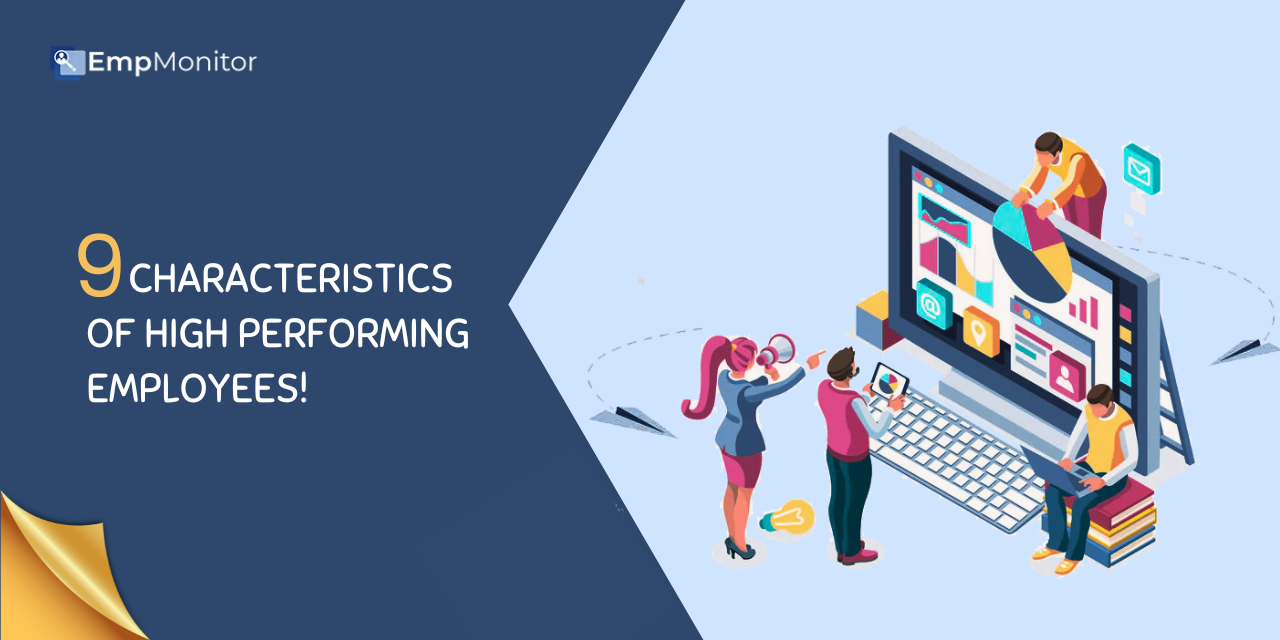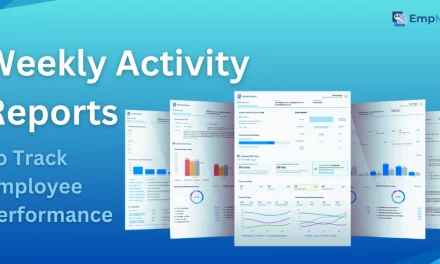In every workplace, there’s a select group of individuals who seem to consistently excel, surpassing expectations and driving the organization toward success. These individuals are the high performing employees, the backbone of any thriving business. But what exactly sets them apart? What are the traits and behaviors that make them so effective? Let’s explore the secrets behind the success of high performing employees.
Whether you’re a manager striving to build a dream team or an individual eager for personal growth, get ready. We’re about to embark on a journey that’ll transform the way you work and elevate your performance to new heights. Let’s explore the secrets of success, one trait at a time!
Listen To The Podcast Now!
High Performance Employee Characteristics:
High performing employees exhibit a range of behaviors that can vary depending on their specific job role, industry, and organizational culture. However, several key traits and actions serve as high performance indicators commonly associated with top performers:
Drive and Motivation:
High performing employees thrive on an intrinsic drive to succeed. They set ambitious goals for themselves and are relentless in their pursuit of excellence. Whether it’s tackling challenging projects or seeking outgrowth opportunities, these individuals are driven by a deep sense of motivation that propels them forward, even in the face of adversity.
Adaptability and Resilience:
In today’s fast-paced and ever-changing business landscape, adaptability is vital. These employees possess the ability to quickly pivot and adjust to new circumstances, whether it’s changes in technology, market dynamics, or organizational structure. They thrive in environments of uncertainty and are not afraid to take calculated risks. Moreover, they exhibit resilience in the face of setbacks, viewing failures as learning opportunities rather than obstacles.
Proactive Communication:
Effective communication is essential for success in any role. High performing employees excel not only in articulating their ideas and thoughts but also in actively listening to others. They adeptly convey complex information clearly and concisely, fostering collaboration and driving alignment within teams. Moreover, they are proactive communicators, regularly seeking feedback and providing constructive input to help improve processes and outcomes.
Continuous Learning:
The pursuit of knowledge is a hallmark of high performing employees. They understand that the world is constantly evolving, and to stay ahead, they must continuously expand their skill set and stay abreast of industry trends. Whether through formal education, on-the-job training, or self-directed learning, these individuals constantly seek opportunities to grow and develop professionally. This commitment to lifelong learning benefits them personally and adds value to the organizations they serve.
Proactive Problem-Solving:
High performing teams and employees take proactive steps to address challenges before they become crucial. They demonstrate creativity and resourcefulness in finding solutions.
Emotional Intelligence:
High performing employees also exhibit emotional intelligence, or EQ, as another critical trait. They have a sharp awareness of both their emotions and those of others, enabling them to navigate interpersonal dynamics effortlessly. They are empathetic listeners who can effectively manage conflicts and diffuse tense situations. Moreover, they inspire trust and confidence in their colleagues, fostering a positive and supportive work environment.
Results-Oriented Mindset:
High-performing employees are laser-focused on results. They recognize the importance of setting clear objectives and are relentless in achieving them. Whether it’s meeting deadlines, exceeding targets, or delivering exceptional quality work, these individuals are committed to producing tangible outcomes that drive organizational success. They hold themselves accountable for their performance and continually seek ways to improve and optimize their contributions.
Positive Attitude and Professionalism:
High performers maintain a positive attitude towards their work and colleagues, even during challenging times. They exhibit professionalism in their interactions, demonstrate integrity and ethics, and contribute to a positive work culture.
Time Management and Prioritization:
Lastly, Top performers are skilled at managing their time effectively and prioritizing tasks based on importance and urgency. They can meet deadlines and deliver high-quality work even under pressure.
These behaviors, when demonstrated, serve as indicators of high performance in the workplace, regardless of the specific job role or industry. Developing these traits can help individuals excel in their careers and contribute significantly to their organizations.
Cultivating High Performance (Tips):
Now that we’ve outlined the characteristics of high performing employees, the question arises: how can organizations foster an environment conducive to their success? Here’s a blueprint for cultivating high performance within your team or organization:
Facilitate Professional Development Opportunities –
Invest in training, workshops, and other development opportunities to help team members enhance their skills and capabilities. Encourage continuous learning and provide resources for professional growth.
Lead by Demonstrating High Performance –
Demonstrate high-performance behaviors yourself as a leader, motivate other employees with your performance. Model the attitudes and actions you want to see in your team members, such as proactive problem-solving, effective communication, and accountability.
Cultivate a Collaborative Work Environment –
Promote collaboration and teamwork within the team’s culture. Encourage open communication, knowledge sharing, and mutual support among team members. Recognize and reward collective achievements.
Support Work-Life Balance –
Recognize the importance of work-life balance in maintaining high performance. Encourage healthy habits, such as taking breaks, exercising, and spending time with family and friends, to avoid burnout and maintain productivity.
Establish Clear Performance Expectations –
Clearly define expectations for performance and behavior within the team. Ensure everyone understands the goals, objectives, and standards of excellence they are expected to meet.
Provide Ongoing Feedback and Guidance –
Offer constructive feedback regularly to help team members understand their strengths and areas for improvement. Acknowledge and celebrate successes while also guiding how to overcome challenges.
Utilize Performance Monitoring Tools –
Use performance monitoring tools like EmpMonitor to track productivity and monitor work patterns. This tool can help identify areas where employees excel and where they may need additional support or resources, ensuring that everyone is performing at their best.
For succession or leadership tracks, combine monitoring insights with a high potential assessment to separate consistent performers from future leaders.
Case Studies: Real-Life Examples of High-Performance Cultures:
These companies inspire their teams to excel and achieve remarkable results by fostering environments that prioritize collaboration, autonomy, and continuous improvement. Here are some real-life examples of companies renowned for their high-performance cultures:
Google: Known for its innovative work environment, Google encourages creativity and autonomy among its employees. With perks like free meals, flexible work hours, and dedicated “20% time” for personal projects, Google fosters a culture of experimentation and continuous learning.
Netflix: Netflix has a culture built around freedom and responsibility. Employees are trusted to manage their time and are encouraged to take calculated risks. The company emphasizes candid feedback and values high performance over long hours.
Amazon: Amazon’s intense work culture expects employees to deliver results quickly, contributing to its fame. The company prioritizes customer obsession and encourages innovation at all levels. Amazon’s leadership principles guide decision-making and behavior, building a high-performance culture.
Salesforce: Salesforce focuses on creating a culture of trust, transparency, and equality. The company values employee well-being and invests in programs to support work-life balance. Salesforce also emphasizes giving back to the community through volunteerism and support.
Zappos: Zappos prioritizes employee happiness and company culture above all else. The company offers a unique “Culture Book” where employees share their experiences and emphasizes delivering WOW through customer service.
Southwest Airlines: Southwest Airlines has a renowned culture that centers on its employees. They empower their staff to make decisions and treat them as partners in the company’s success. The airline values teamwork, humor, and a fun working environment.
Toyota: Toyota’s culture revolves around continuous improvement and respect for people. The company encourages employee involvement in problem-solving and decision-making processes, fostering a sense of ownership and accountability.
These companies demonstrate that achieving a high-performance culture involves various approaches, including empowering employees, fostering innovation, prioritizing customer satisfaction, and promoting work-life balance.
You can also use workforce management software like EmpMonitor to get the insights of high performing employees and manage performance of employees by analyzing areas for improvement.
EmpMonitor For Identifying High Performing Employees:

Here’s how an employee monitoring software like EmpMonitor can aid in identifying such employees:
Activity Analysis:
EmpMonitor can track the activities of employees on their computers, such as the applications they use, websites they visit, and the time spent on each task. Managers can identify productive employees by analyzing their engaged activities, task completion efficiency, and relevant application and website usage.
Time Management:
High performing employees often manage their time effectively, focusing on tasks that contribute to their goals and the organization’s objectives. EmpMonitor can help identify employees who effectively manage their time, minimizing distractions and maximizing their productivity during work hours.
Task Completion:
Monitoring software can track the progress of tasks assigned to employees. High performing employees are likely to consistently meet deadlines and complete tasks efficiently. Managers can identify consistently high performing employees by analyzing task completion rates and timelines.
Work Patterns:
EmpMonitor offers insights into employees’ work patterns, including their most productive hours and peak activity periods. Managers can identify employees who consistently demonstrate high productivity during specific times of the day and leverage this information to optimize team schedules and assignments.
Behavioral Analytics:
It can also analyze employee behavior patterns, such as frequent breaks, idle time, or excessive non-work-related activities. While these factors alone may not determine employee performance, they can provide insights into potential areas for improvement or intervention.
Feedback and Evaluation:
EmpMonitor data can complement traditional performance reviews by providing objective metrics and insights into employee performance. Managers can use this data to provide feedback, recognition, and coaching to high performers while identifying areas for development in others.
EmpMonitor provides a comprehensive platform for tracking, analyzing, and identifying high performing employees based on various performance indicators and metrics. Organizations can optimize talent management strategies and effectively recognize and reward top performers by leveraging the platform’s features.
Also Read:
Top 10 indicators of a high-performance employee
Top 05 tips for motivating employees in the workplace
Conclusion –
Cultivating a team of high performing employees is essential for organizational success, and it requires a multifaceted approach that encompasses both individual and organizational development. Organizations can create an environment where employees thrive and excel by understanding the key traits and behaviors of high performers and implementing strategies to foster these qualities,
Tools like EmpMonitor can further aid in identifying and recognizing high-performance employees by tracking and analyzing performance metrics in real time, providing valuable insights for talent management and development initiatives.
Cultivating high performance requires individual effort, organizational support, and effective management. By investing in the development of employees and creating a culture that values excellence, organizations can unleash the full potential of their teams and drive success in the ever-evolving business landscape.














